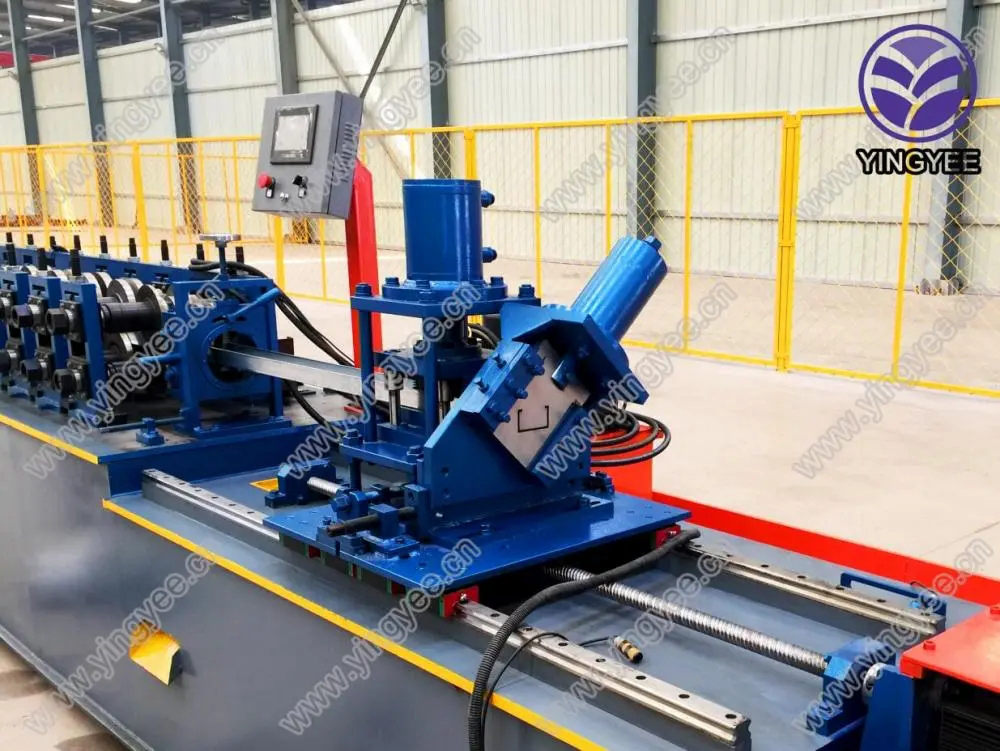
Understanding Downspout Roll Forming Machines
In the realm of modern construction and building maintenance, the importance of efficient drainage systems cannot be overstated. Among the various components that contribute to effective rainwater management, downspouts play a pivotal role. To manufacture these essential components efficiently, the downspout roll forming machine emerges as a vital piece of equipment. This article delves into the features, benefits, and applications of downspout roll forming machines.
What is a Downspout Roll Forming Machine?
A downspout roll forming machine is specialized machinery designed to transform flat metal sheets into downspouts—vertical pipes that direct rainwater from gutters to the ground, preventing water accumulation around the foundation of a building. The process involves feeding coils of material, typically galvanized steel or aluminum, through a series of rollers that shape the metal into the desired profile. The machine utilizes advanced technology to ensure precision and efficiency, allowing for high-volume production of downspouts in various sizes and designs.
Key Features of Downspout Roll Forming Machines
1. Automation Modern downspout roll forming machines are often equipped with automated controls, reducing the need for manual intervention. This automation enhances consistency in production and minimizes the likelihood of errors.
2. Customization These machines can be adjusted to produce downspouts of different shapes and dimensions, catering to the specific needs of various construction projects. Some machines even offer the capability to create decorative designs, adding aesthetic appeal to functional components.
3. Durability and Reliability Built to withstand rigorous operation, downspout roll forming machines are constructed from high-quality materials, ensuring a long service life with minimal maintenance.

4. High Efficiency With the ability to produce large quantities of downspouts in a relatively short period, these machines significantly improve production efficiency. As a result, manufacturers can meet the increasing demand in the construction industry without compromising quality.
Benefits of Using Downspout Roll Forming Machines
1. Cost-Effective By automating the production process and reducing material waste, downspout roll forming machines help manufacturers lower production costs, translating to more competitive pricing in the market.
2. Consistency in Quality The precision engineering of these machines ensures that every downspout produced meets the required specifications, leading to high-quality finished products.
3. Faster Turnaround Times The increased speed of production allows manufacturers to fulfill orders more quickly, benefiting builders and contractors who depend on timely deliveries for their projects.
Applications in the Construction Industry
Downspout roll forming machines are extensively used in residential, commercial, and industrial construction. They are vital for producing downspouts that are integral to roofing systems, where effective water drainage is crucial to maintaining the integrity of structures. Furthermore, custom-designed downspouts can enhance the aesthetic elements of a building’s exterior, making them not only functional but also visually appealing.
In conclusion, the downspout roll forming machine plays a critical role in modern construction by enabling the efficient production of downspouts. Its advanced features, coupled with the benefits of automation and customization, make it an essential investment for manufacturers in the building industry. As the demand for sustainable and effective drainage solutions continues to grow, the significance of downspout roll forming machines will undoubtedly expand, solidifying their place in construction technology.